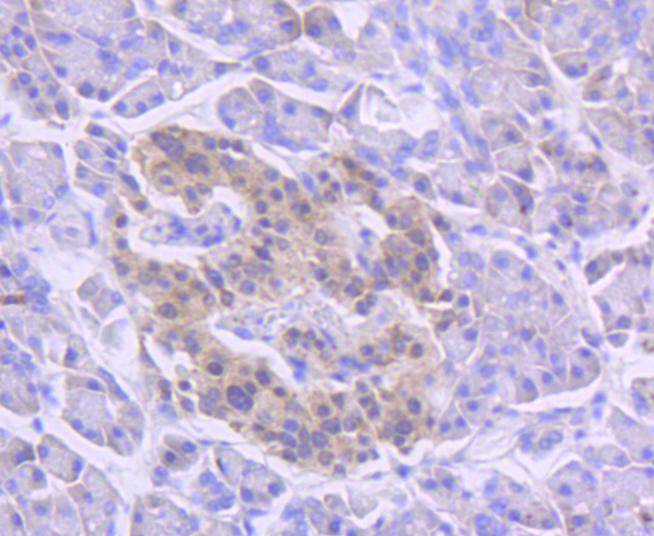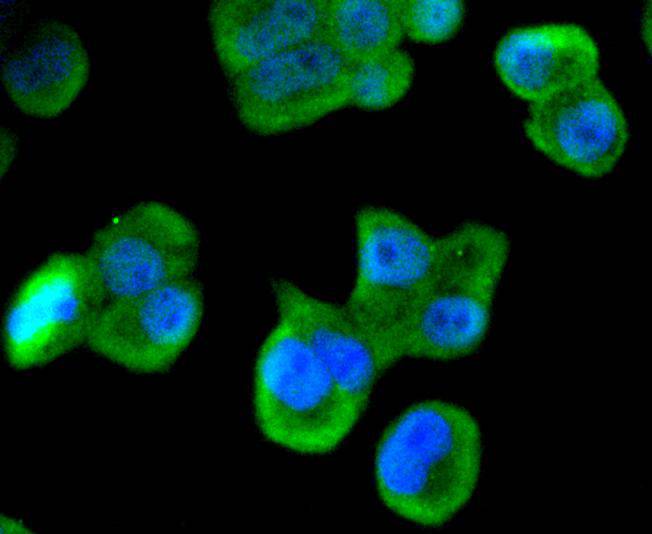Product Detail
Product NameMusashi 1 Rabbit mAb
Clone No.SJ201
Host SpeciesRecombinant Rabbit
Clonality Monoclonal
PurificationProA affinity purified
ApplicationsWB, ICC/IF, IHC, IP, FC
Species ReactivityHu
Immunogen Descrecombinant protein
ConjugateUnconjugated
Other NamesMsi 1 antibody
Msi1 antibody
MSI1H_HUMAN antibody
Musashi homolog 1 antibody
Musashi-1 antibody
Musashi1 antibody
RNA binding protein Musashi homolog 1 antibody
RNA-binding protein Musashi homolog 1 antibody
Accession NoSwiss-Prot#:O43347
Uniprot
O43347
Gene ID
4440;
Calculated MW39 kDa
Formulation1*TBS (pH7.4), 1%BSA, 40%Glycerol. Preservative: 0.05% Sodium Azide.
StorageStore at -20˚C
Application Details
WB: 1:1000
IHC: 1:50-1:200
ICC: 1:50-1:200
FC: 1:50-1:200
Immunohistochemical analysis of paraffin-embedded human pancreas tissue using anti-Musashi 1 antibody. Counter stained with hematoxylin.
ICC staining Musashi 1 in Hela cells (green). The nuclear counter stain is DAPI (blue). Cells were fixed in paraformaldehyde, permeabilised with 0.25% Triton X100/PBS.
ICC staining Musashi 1 in A549 cells (green). The nuclear counter stain is DAPI (blue). Cells were fixed in paraformaldehyde, permeabilised with 0.25% Triton X100/PBS.
Musashi1 (Msi1) is an RNA-binding protein expressed in neural progenitor cells and neural stem cells. Msi1 is the mammalian homolog of Drosophila Musashi. The gene encoding human Msi1 encodes a 362 amino acid protein. In murine embryonic neural progenitor cells, Msi1 localizes to the cytoplasm and is downregulated during differentiation. Msi1 binds to NUMB, which encodes a membrane-associated antagonist of Notch signaling. Msi1 appears to function in the proliferation and maintenance of stem cell populations of the central nervous system. In addition to its usefulness as a marker for neural progenitor cells in normal human brains, Msi1 is also a marker for human gliomas. In rats, Msi1 is expressed in Sertoli cells of the testis and granulosa cells of the ovary.
If you have published an article using product 48764, please notify us so that we can cite your literature.





 Yes
Yes



